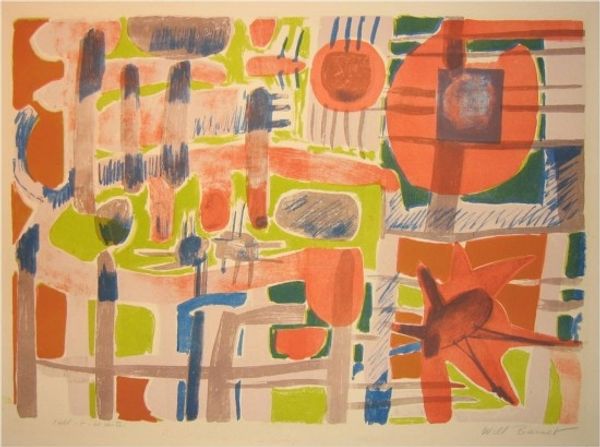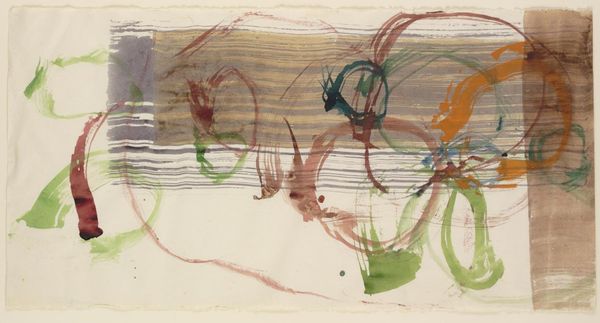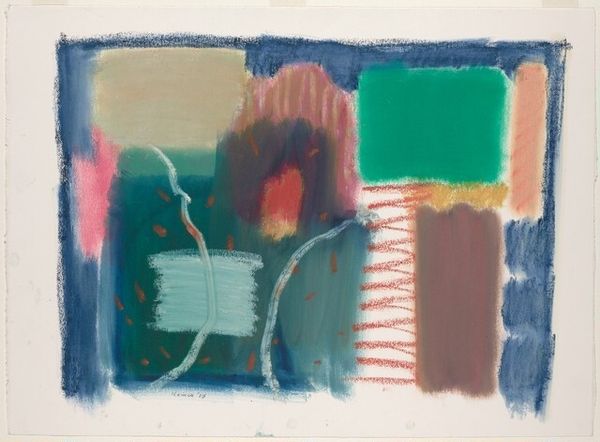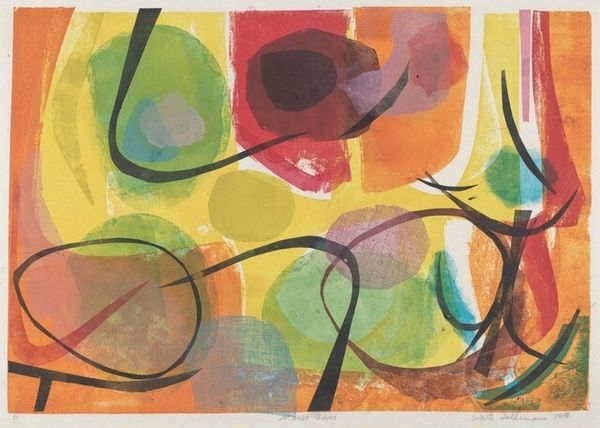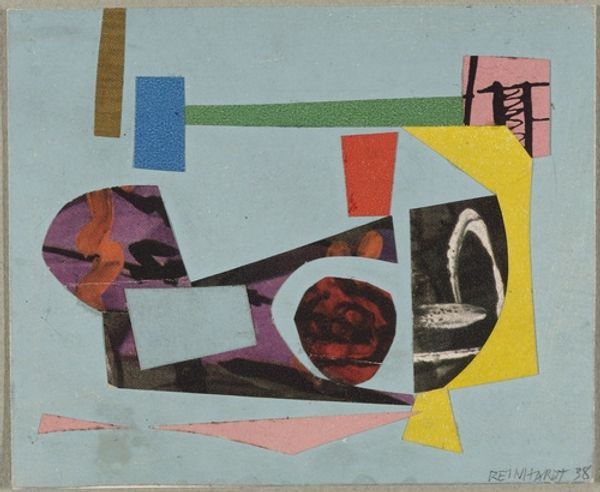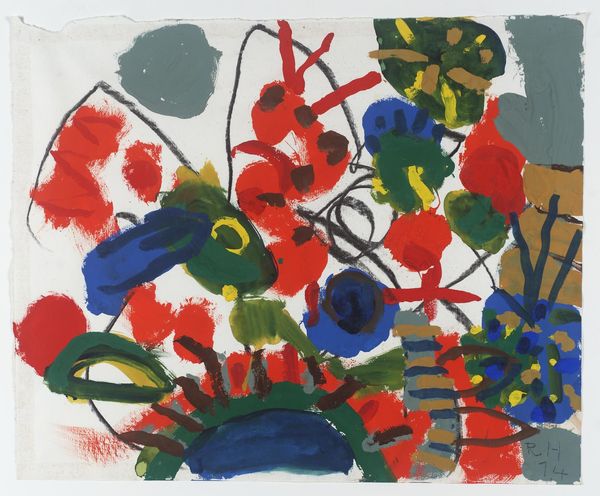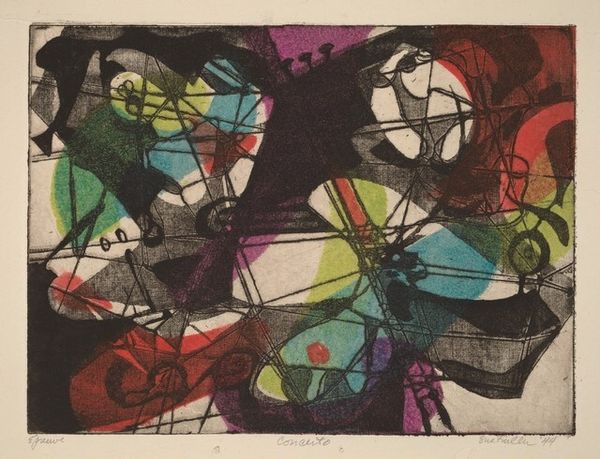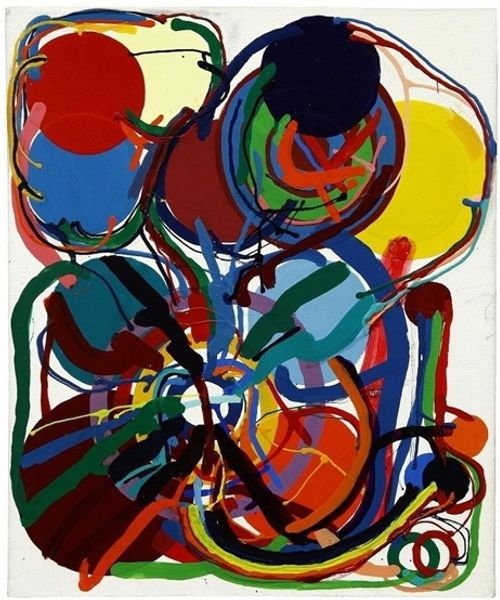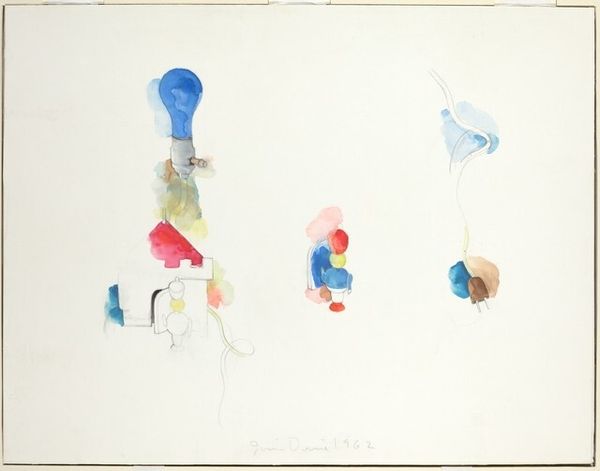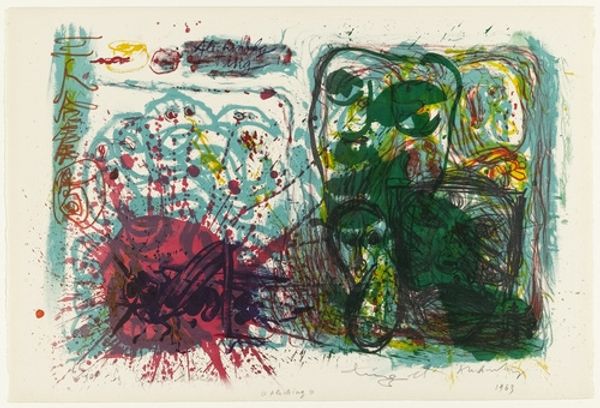
painting, watercolor
#
painting
#
abstract
#
watercolor
#
expressionism
#
abstraction
#
watercolor
Copyright: Public Domain: Artvee
Editor: Wassily Kandinsky's watercolor from 1913, 'Aquarell ‘Mit Wald und Regenbogen’,' is a fascinating mix of color and form. I am immediately struck by the rawness of the pigment against the untreated paper. What do you make of Kandinsky’s use of materials here? Curator: Considering the context, the accessibility of watercolor and paper are paramount. Kandinsky moved away from traditional oil paints towards more readily available and transportable materials. This reflects a broader shift, wouldn’t you say, challenging the established hierarchies of art production by embracing simpler means? The lack of treatment of the paper further underscores this. Editor: I see what you mean. So the very *make-up* of this work challenges notions of high and low art? But did this choice limit his expression? Curator: Limited, or *liberated*? By minimizing the divide between artist and artwork through readily available, inexpensive materials, wasn’t he foregrounding the labor of the artist? Consider also how watercolor lends itself to spontaneity – less preparation is needed when compared to oil painting. This reflects an engagement with immediacy of the art experience itself. Editor: That’s a great point. It does feel incredibly spontaneous. I hadn't thought about the ease of creation factoring into its meaning. It's less about refined skill and more about immediate expression facilitated by humble material. Curator: Exactly! The turn of the 20th century witnessed changing relationships with labour and with commodities. Kandinsky seems to be deliberately aligning his artistic production with these wider material realities. He’s showing the mechanics behind art making itself. Editor: Well, thinking about the materiality really shifts how I see this work. I’m now thinking about Kandinsky’s intentions beyond just the visual effect. Curator: Precisely. Looking at process opens up a wealth of interpretative possibilities, revealing that art always embodies the material conditions of its production.
Comments
No comments
Be the first to comment and join the conversation on the ultimate creative platform.
